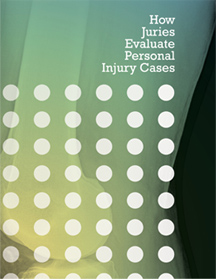Evaluation of pain, with questionnaire
Pain disorders are generally classified in one of four classes, ranging from mild to severe. The following checklist can be reviewed to determine impairment classifications as a result of pain disorders.
Class 1 — mild
- The pain severity, resulting from a combination of both intensity and frequency, is considered mild.
- The individual’s pain is only be mildly aggravated by performing activities of daily living, and the individual is generally able to perform them with few, if any, modifications.
- The individual demonstrates either little or no emotional distress when responding to pain.
- The individual does not receive treatment for pain on a regular basis.
- Any pain-related limitation during the physical examination will be mild and appropriate with few pain behaviors or over-expressions, such as moaning, limping, guarded reaction, grimacing and the like during examination.
Class 2 — moderate
- The pain severity, based on both intensity and frequency, is considered moderate.
- The individual has moderate difficulty managing activities of daily living and must make important significant modifications to perform them.
- The individual demonstrates mild to moderate distress in response and relation to pain.
- The individual requires ongoing medical treatment and monitoring, and takes medication much of the time.
- The individual demonstrates pain-related limitations on physical examination and a number of pain behaviors appear during the examination.
Class 3 — moderately severe
- Pain is present most of the time and may reach intensity levels ranging from 9 to 10 on a scale of 1 to 10.
- The individual can perform activities of daily living, but only with substantial modifications, and is unable to perform many routine activities.
- The individual demonstrate moderate to severe distress in response and relation to the pain.
- The individual receives medication to control pain on a maintenance basis.
- On physical examination, the individual demonstrates severe pain-related limitation, and it may be difficult to perform an examination with results also being difficult to interpret.
- Pain behaviors are consistently observed during the examination and appear to be consistent and congruent with organic dysfunction.
Class 4 — severe
- Pain is virtually continuous with intensity reaching the 9 to 10 level consistently and at its worst.
- The individual needs assistance from others for many activities of daily living (including dressing, preparation of food, bathing and the like) and also has to spend a great deal of time accomplishing them.
- The individual demonstrates severe distress in response and relation to the pain, and often indicates that the pain is unbearable or out of control.
- The individual receive the maximum pharmacologic support and medicinal treatment for pain on an ongoing basis.
- Physical examination is virtually impossible to perform because the individual is intolerant of any of the typical examination maneuvers, e.g., unable to ambulate to allow palpation and the like.
- The pain behaviors observed appear to be congruent with organic dysfunction.
Sample pain questionnaire
Many physicians use a pain questionnaire, which allows for self-reporting of severity. One such example follows:




